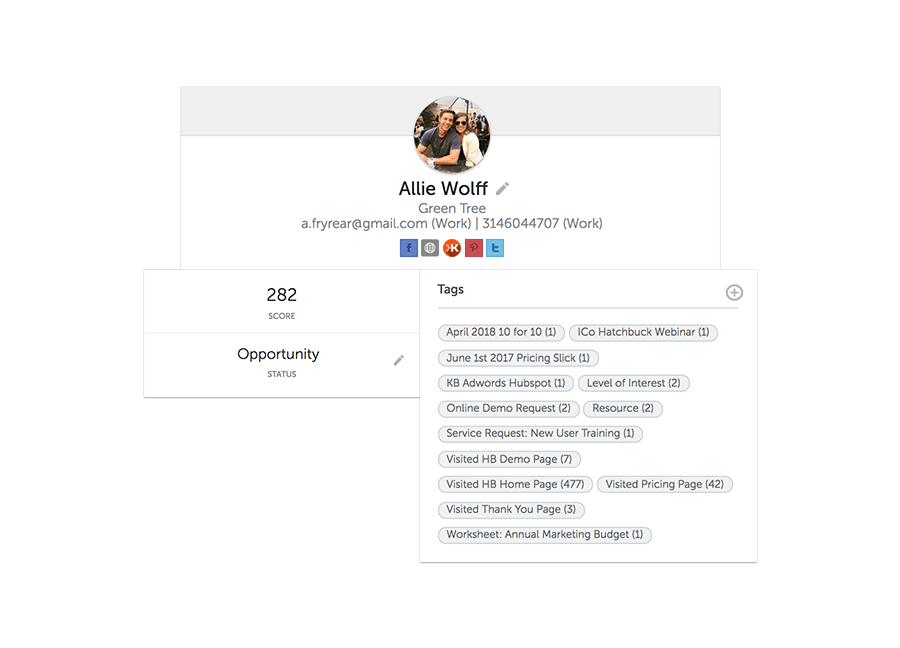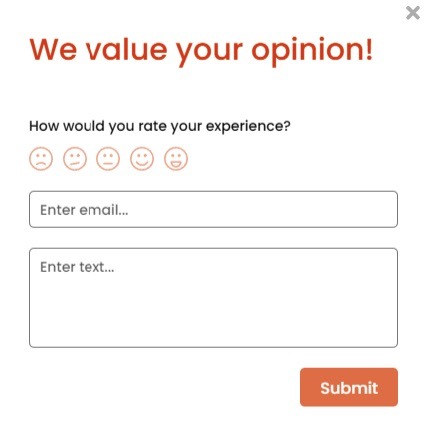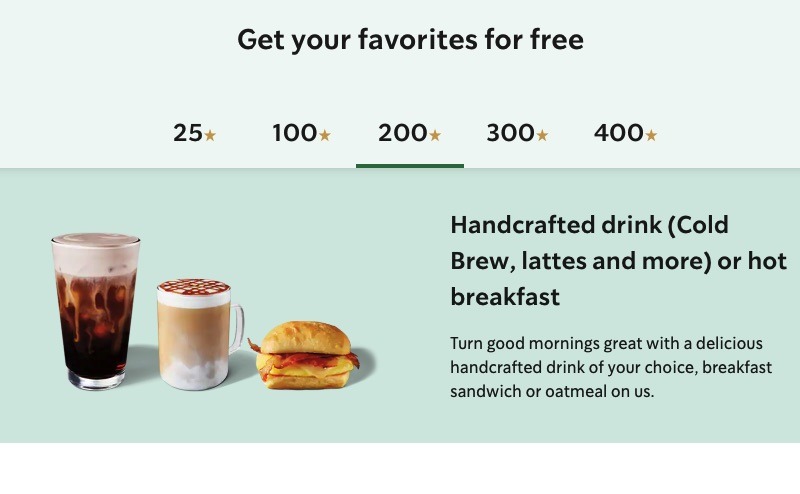I hope you enjoy this blog post. If you want Hello Bar to grow your leads, click here.
Author:
Michael Wicker
Published
July 29, 2024
I hope you enjoy this blog post. If you want Hello Bar to grow your leads, click here.
Author:
Michael Wicker
Published
July 29, 2024

You’ve invested the time and money to optimize your site and attract valuable, qualified, bottom of the funnel leads to your website with Hello Bar.
What’s next?
Just because someone downloads a resource, schedules a meeting, or makes a purchase doesn’t mean you’re off the hook. Now, nurturing, tracking, and converting visitors into loyal customers begins.
With new businesses popping up daily, you’re bound to face competition. And without plans to out-market and outsmart those other brands, there’s no doubt that at least some of your prospects and customers will leave you for the other guy. So, how can you keep your prospects interested and your customers loyal? We have nine foolproof tactics to help you build brand loyalty and create raving fans.
For example, some consumers might prefer McDonald’s over Burger King. Although these two food chains offer similar products, some consumers have developed a strong loyalty to McDonald’s and will continue to buy its products because they believe it is better.
In marketing, brand loyalty refers to consumers’ preference for a particular company’s products and services.
Consumers who exhibit brand loyalty perceive that a certain brand offers superior products and services compared to its competitors. This perception leads them to continually purchase products from that brand, regardless of how cheap or expensive they may be.
For example, some consumers might prefer McDonald’s over Burger King. Although these two food chains offer similar products, some consumers have developed a strong loyalty to McDonald’s and will continue to buy its products because they believe it is better.
Building a loyal customer base can significantly contribute to a company’s long-term success. Here’s why:
To boost your brand loyalty, you must be intentional about providing good customer service and creating an environment where your customers always feel valued. Here are some strategies to implement to boost customer satisfaction and brand loyalty.
How in tune are you with your customer base? If you’re not sure who your radical buyer is, that’s the first place you should start in your brand loyalty journey.
Not only is a buyer persona vital for your branding and messaging, but it’s even more important when building a new product or offering a new service. Is it something your customers actually need or want? Or are you wasting your resources? If you’re sending your business roadmap in a direction that isn’t going to fit your target market needs, you’re almost certainly going to see higher customer churn and lower sales.
What is it that makes your long-term customers stick? Is it your customer service, your team members, or your product? The easiest way to gauge that stickiness factor is through net promoter score (NPS).
NPS is one of the most vital metrics for a business. Net Promoter Score is a worldwide standard for businesses to measure, understand, and improve customer experience. NPS is a simple way to get customer feedback on your brand and to understand how likely customers are to recommend your organization to friends, family, and colleagues.

Tools like Jotform Survey Maker, SurveyMonkey, AskNicely, and ZenDesk allow you to survey your customer base regularly to see what’s working and what isn’t. Analyzing your customer base – How is their experience? What changes would they like to see made? Will it help you create a better customer experience and build loyalty?
First impressions matter, and the best way to make a great first impression on your customers is by giving them an unforgettable onboarding experience.
You can easily do this by personalizing the onboarding experience for each customer. Start with a welcome email that addresses each customer by name and let them know how much you look forward to working with them. Doing this makes your customers feel valued and appreciated and is the foundation for building brand loyalty.
While sending a welcome email is necessary, it doesn’t end there. You must also maintain consistent communication throughout the onboarding process. Keep your communication lines open and let customers know you’re always available for support.
One of the best ways to boost brand loyalty is by making your customers feel like they’re a part of something bigger. Build a brand community where customers can interact with each other and your brand. This fosters a sense of belonging.
You can create an online forum where you offer exclusive content, access to events, and product promotions to your loyal customers. Social media platforms like Facebook groups, Reddit, or Telegram channels are good for online communities.
Apple is an example of a brand that uses communities to build brand loyalty. It provides an Apple support community where users can share tips, tricks, and experiences using Apple products.
If you’re not already utilizing a CRM, your business is missing out on opportunities to build and grow relationships. Your CRM data is a wildly valuable resource you should leverage daily. It can offer deep insights into what your customers are doing online – which will help you stay on top of how their business is changing and their goals. Properly store your data in a centralized location (CRM) and update it regularly to enable you to offer help, advice, or even upsell easily.
Letting your CRM data go stale can harm your business as a whole. If you’re not regularly using a CRM to keep customer records current, you risk letting customer experience fall by the wayside. This increases customer churn, which is the opposite of building brand loyalty.
Keeping your customer data clean and actionable is a team effort. Everyone from marketing to sales to customer support has a role in creating a data goldmine.

Analyze your lead scoring data to find the lead score sweet spot where your prospects are the most engaged and ready to buy. This will help you target more raving-fan customers and improve your conversion rates. You can also use lead scoring to find your most loyal customers, allowing you to target excellent candidates for referrals, case studies, and reviews.
Brand loyalty directly corresponds with responsiveness. If communication is slipping through the cracks, your customer relationships will suffer. When juggling multiple accounts and trying to stay afloat, you need a surefire process to keep things on track. That’s where automation comes in.
Marketing automation allows you to keep tabs on prospects and customers at every stage of the customer journey. Tags, lead scoring, and nurture campaigns will allow you to connect with contacts before, during, and after a sale with intelligent automation. You can be sure you’re sending the right message at the right time so your brand is at the top of your inbox and mind.
You can easily keep tabs on what visitors are doing on your website through automated tags and tag rules. Whether they’re visiting landing pages, filling out forms, or watching videos, marketing automation allows you to tag automatically and segment visitors based on their actions and interests without repetitive daily tasks.
Your contact lead score is created through those automations. Any time a tag is triggered, an assigned value is added to that lead score – so the more engaged your contacts are, the higher the lead score associated with their record.
Nurture campaigns come in many shapes and sizes: general nurture campaigns, hot prospect campaigns, customer nurture campaigns, win-back campaigns, and so on. Unlike old-school drip campaigns, the nurture campaigns we’re referring to comprise many steps beyond just email marketing. A well-executed nurture campaign will include emails, tasks, notes, tags, and contact record updates. A nurture campaign guides a contact down your sales funnel while keeping your sales and marketing teams in the loop.

Nurture campaigns are guaranteed to simplify your life, make your business run more smoothly, and ensure valuable leads and loyal customers don’t fall through the cracks.
Providing high-quality customer service is one of the best ways to drive customer loyalty. You must make your customers feel valued enough to become loyal to your brand. Here’s how:

Image via Common Ninja
Incentivize repeat purchases as a way of encouraging existing customers to remain loyal to your brand. A good way to encourage customer loyalty is by creating reward programs.
For example, Starbucks effectively uses reward programs to build brand loyalty. With the Starbucks reward program, customers earn one star for every dollar they spend. When they have at least 25 stars, they can redeem them for free drinks, baked goods, or Starbucks merchandise.

Image via Starbucks
Another good way to boost brand loyalty is to anticipate customer needs and meet their expectations even before they ask.
Customers who make repeat purchases expect a certain level of quality in your products and services. As such, you must maintain consistent quality standards to keep them satisfied.
As you strive to understand what your customers expect from your brand, remember that customer needs can also change. Therefore, you must keep up with evolving customer preferences and market trends to maintain customer satisfaction.
A good way to do this is by keeping an eye on your competitors. Use competitor monitoring tools like Market Explorer and Social Tracker to help you observe competitors and change market trends.
Finally, use social listening tools like Brandwatch or Keyhole to monitor consumer sentiment about your brand. This will give you insights into changing customer preferences and help you identify areas that need improvement.
An authentic brand ambassador who has a genuine brand affinity with your company can attract more customers who will remain loyal to your brand.
Your brand ambassador could be a celebrity, industry expert, or social media influencer who resonates with your brand ideals.
Brand ambassadors don’t just extend your brand reach; they also enhance your brand trust and credibility. Infact, according to a Matter Survey, 69% of consumers are more likely to trust product recommendations from influencers.
Therefore, if an influencer serves as your brand ambassador, they can influence purchase decisions and inspire their audience to become brand loyalists.
Q1. How can you increase brand loyalty?
Some effective strategies to cultivate brand loyalty include:
Q2. What reduces brand loyalty?
Some of the factors that can negatively affect brand loyalty include:
Q3. What are the three stages of brand loyalty?
The three stages of brand loyalty include:
Q4. What is the best example of brand loyalty?
A good example of how customers can exhibit brand loyalty for a specific brand is when consumers prefer Coca-Cola over Pepsi. This is because they have developed a strong preference and emotional attachment to the Coca-Cola brand and will continue to purchase its products.
Q5. What is a brand loyalist?
A brand loyalist is a consumer who has a strong preference for one brand over other alternatives due to its perceived value.
Some of the most effective ways to build brand loyalty are providing excellent customer service and creating rewards programs.
A rewards program builds loyal customers by showing gratitude and motivating loyalty program members to keep returning to your brand.
Another great way to build high brand loyalty is to anticipate and cater to your customers’ needs. Brand loyalists associate your brand with high quality, so you cannot afford to compromise on quality. With these practices, you can build a loyal customer base.
Good luck!
Jonathan Herrick is co-founder, chief sales officer, chief marketing officer, and chief high-fiver of Hatchbuck, an all-in-one sales and marketing platform based in St. Louis. His extensive experience in digital marketing and sales strategies has been a driving factor in growing Hatchbuck’s sales by over 2,000 percent. A purpose-driven leader in all aspects, Jonathan has a passion for cultivating his team’s culture, spending time with his family and working to make a difference in the St. Louis community.